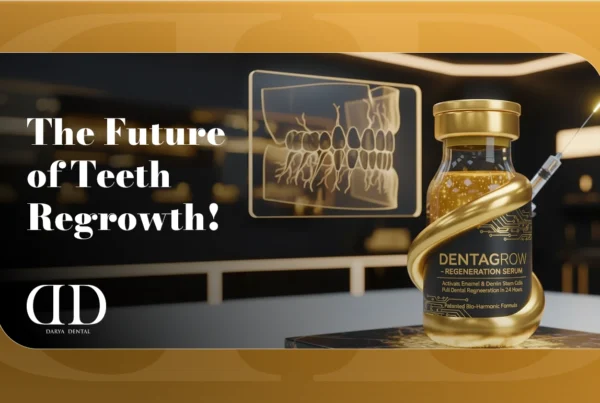Emax vs Other Veneers
 You know that feeling when you’re scrolling through Instagram and everyone seems to have that perfect, Hollywood smile? I get it – I’ve spent countless hours researching dental veneers, and let me tell you, choosing between Emax and other veneer types isn’t as straightforward as it might seem. But don’t worry, I’m here to break it all down for you in plain English, drawing from extensive research and expert insights.
You know that feeling when you’re scrolling through Instagram and everyone seems to have that perfect, Hollywood smile? I get it – I’ve spent countless hours researching dental veneers, and let me tell you, choosing between Emax and other veneer types isn’t as straightforward as it might seem. But don’t worry, I’m here to break it all down for you in plain English, drawing from extensive research and expert insights.
The Basics: What Makes Emax Different?
Let’s start with what you’re probably wondering – why is everyone talking about Emax veneers? Think of Emax as the iPhone of the veneer world. They’re made from a special type of ceramic called lithium disilicate, which sounds fancy (and it is), but what matters is that it’s incredibly strong while still looking natural. What sets Emax apart is their ultra-thin design, comparable to a contact lens, combined with exceptional durability. The material’s natural light reflection properties closely mimic real teeth, and they can be customized to match your desired shade perfectly.
Durability Face-Off: Do Emax Veneers Chip Easily?
One of the biggest concerns I hear from patients is about durability, and it’s a valid question. The good news? According to a recent study published in the Journal of Prosthetic Dentistry, Emax veneers show an impressive 96.4% survival rate after 10 years. That’s remarkably high when compared to other dental restorations, and it speaks volumes about their longevity.
When it comes to lifespan, Emax veneers typically last between 15-20 years with proper care. This outperforms traditional porcelain veneers, which generally last 10-15 years, and composite veneers, which might need replacement after 5-7 years. Zirconia veneers match Emax in longevity, also lasting 15-20 years, but they have different aesthetic properties we’ll explore later.
The Cost Factor: Is EMAX More Expensive?
Let’s talk about what’s probably on your mind – the cost. Emax veneers typically range from $900-$2,500 per tooth in the United States. While this might seem steep at first glance, it’s essential to consider the long-term value. The extended lifespan means you’ll likely need fewer replacements over time, potentially saving money in the long run. Additionally, their resistance to staining reduces maintenance costs, and their durability means you’re less likely to face expensive repairs or replacements due to chips or cracks.
Natural Appearance: Which Veneer Looks Most Natural?
This is where Emax truly excels, and I’ll explain why. The material possesses a unique multi-layered structure that mimics natural teeth, creating an authentic appearance that’s hard to distinguish from real teeth. The secret lies in how Emax interacts with light – it has translucent properties similar to natural tooth enamel, allowing light to penetrate and reflect in a way that creates that coveted natural gleam.
The ultra-thin design of Emax veneers also plays a crucial role in their natural appearance. Because less tooth reduction is needed compared to traditional veneers, more of your natural tooth structure remains intact. This preservation not only maintains the structural integrity of your teeth but also contributes to a more natural-looking smile.
Maintenance and Daily Care: Do Emax Veneers Stay White?
For coffee lovers and wine enthusiasts, here’s some welcome news: Emax veneers show exceptional resistance to staining. The advanced ceramic material used in their construction creates a smooth, non-porous surface that prevents common staining agents from penetrating and discoloring the veneer.
Maintaining their pristine appearance doesn’t require complicated care routines. A simple daily regimen of brushing with non-abrasive toothpaste and regular flossing will keep your veneers looking their best. While they’re incredibly durable, avoiding extremely hard foods and maintaining regular dental check-ups every six months will help ensure their longevity.
The Comprehensive Comparison: Emax vs Other Veneer Types
When comparing Emax to other veneer options, several key factors come into play. Traditional porcelain veneers have been the standard for many years, offering good aesthetics and durability. However, they often require more tooth reduction and may not match the natural light properties of Emax.
Composite veneers, while generally more affordable, don’t offer the same longevity or stain resistance as Emax. They’re more prone to chipping and typically need replacement sooner, which can increase long-term costs.
Zirconia veneers present the closest competition to Emax in terms of durability. They’re incredibly strong and can last just as long. However, their opacity makes them less suitable for achieving that natural look, particularly in front teeth where aesthetics are paramount. Zirconia veneers excel in situations requiring maximum strength or when covering severely discolored teeth.
Making an Informed Decision: Are Emax Veneers Worth It?
The value proposition of Emax veneers extends beyond their initial cost. Their combination of durability, natural aesthetics, and minimal maintenance requirements makes them a compelling choice for many patients. According to clinical studies, their success rate and patient satisfaction levels rank among the highest in cosmetic dentistry.
However, it’s important to understand that veneers are a permanent decision. Once your teeth are prepared for veneers, the process cannot be reversed. The good news is that Emax veneers typically require less tooth reduction compared to traditional options, usually around 0.3-0.5mm – about half the thickness of a credit card.
The Celebrity Connection: What Veneers Do the Stars Choose?
Many celebrities opt for Emax veneers due to their natural appearance under various lighting conditions. Whether they’re walking the red carpet, appearing on screen, or being photographed by paparazzi, Emax veneers maintain their natural look. This versatility has made them increasingly popular among public figures who need their smile to look impeccable in any situation.
Understanding the Application Process
The journey to getting Emax veneers involves several carefully planned steps. Initially, your dentist will conduct a thorough examination and discuss your desired outcome. Using advanced imaging technology, they can often show you a preview of your potential results. The preparation process is minimally invasive, and temporary veneers are placed while your custom Emax veneers are being crafted in a specialized laboratory.
Long-Term Considerations and Care
While Emax veneers are highly durable, their longevity depends significantly on proper care and maintenance. Regular dental check-ups are essential for monitoring the health of both your veneers and natural teeth. Your dentist can detect and address any potential issues early, ensuring your investment maintains its value over time.
Conclusion: Making Your Final Decision
Choosing the right type of veneers is a significant decision that deserves careful consideration. Emax veneers represent some of the most advanced dental technology available today, offering an impressive combination of durability, natural aesthetics, and long-term value. While they might not be the perfect choice for everyone, their proven track record and high patient satisfaction rates make them a leading option in cosmetic dentistry.
 Remember to consider your lifestyle, maintenance commitment, and long-term goals when making your decision. Consulting with qualified dental professionals who can evaluate your specific situation will help ensure you make the choice that best suits your needs. Whether you choose Emax or another veneer option, the most important factor is that you feel confident and satisfied with your new smile.
Remember to consider your lifestyle, maintenance commitment, and long-term goals when making your decision. Consulting with qualified dental professionals who can evaluate your specific situation will help ensure you make the choice that best suits your needs. Whether you choose Emax or another veneer option, the most important factor is that you feel confident and satisfied with your new smile.






